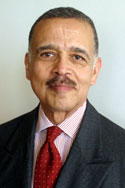ARCHIVES
OF EDITORIALS
May 5, 2005
Historical self deception
The Civil Rights Project at Harvard stirred up quite
a controversy recently with the publication of its study on racial
discrimination against African Americans and
Hispanics in Metro Boston. The results of the study ran counter
to the long held belief that the racial discrimination which plagues
America has somehow missed Greater Boston.
Historically, Boston has taken the lead in the battle against
racial discrimination. Boston was a major center of opposition
to slavery. Frederick Douglass and other supporters of abolition
were free to express their ideas openly. While the South was committed
to racial apartheid, the Massachusetts Legislature passed a law
in 1855 forbidding discrimination in education. This law was passed
after Benjamin Roberts sued to prevent his daughter Sarah from
being required to attend an all black school. He lost the case,
but the Legislature remedied the problem.
In 1865 the state Legislature also passed a law ending racial
discrimination in places of public accommodation. In 1866 two
blacks in Boston were elected to the state Legislature, a first
for America. From then until the turn of the century black candidates
were consistently elected to the Legislature.
George L. Ruffin was appointed a judge in the Charlestown District
Court in 1883. He became the first black judge in the North. During
the Reconstruction period in the South blacks were appointed to
a number of judicial and legislative offices.
It must be noted that the black population during this period
was relatively small. The total population of Boston in 1910 was
670,585. Only 13,564 residents were black. That is a mere two
percent. Thirty years later in 1940 the black population had grown
to only about three percent. A population group that small could
hardly be perceived as a political threat to anyone.
Politicians often declare that Boston is a city of neighborhoods.
Another way of making the same statement is that Boston is a city
of immigrants and ethnic groups. Residents of various neighborhoods
frequently shared the same ethnicity. This was very true decades
ago. Italians lived in East Boston and the North End, the Irish
lived in South Boston, East Dorchester and West Roxbury, Jews
lived in Mattapan and parts of Dorchester, blacks lived in Roxbury
and North Dorchester, the Yankees lived on Beacon Hill and the
Back Bay. There were also smaller ethnic groups such as Poles,
Arabs and Ukrainians that lived in smaller sections of the city.
The battle over school busing in the 1970s established that ethnic
neighborhoods could not maintain control over governmental services
such as housing and schools. Demographic shifts since then have
substantially changed the ethnic landscape. According to the 2000
Census, African Americans, Hispanics and Asians are now the majority
population of the city. As these groups begin to flex their muscles
there will be a political power shift in Boston.
It would be unwise for those in power to defer to Boston’s
glorious history for equal rights in America and ignore the enormous
demographic changes underway in the city. The population of the
old neighborhoods is changing. More racial and ethnic diversity
is visible. For some accustomed to the old ways, change is threatening.
To newcomers, the uncertainty of acceptance is challenging.
Sophisticated leadership is needed to cope with the changes effectively.
The Civil Rights Project provided a valuable public service by
pointing out the issues.
Home
Page

